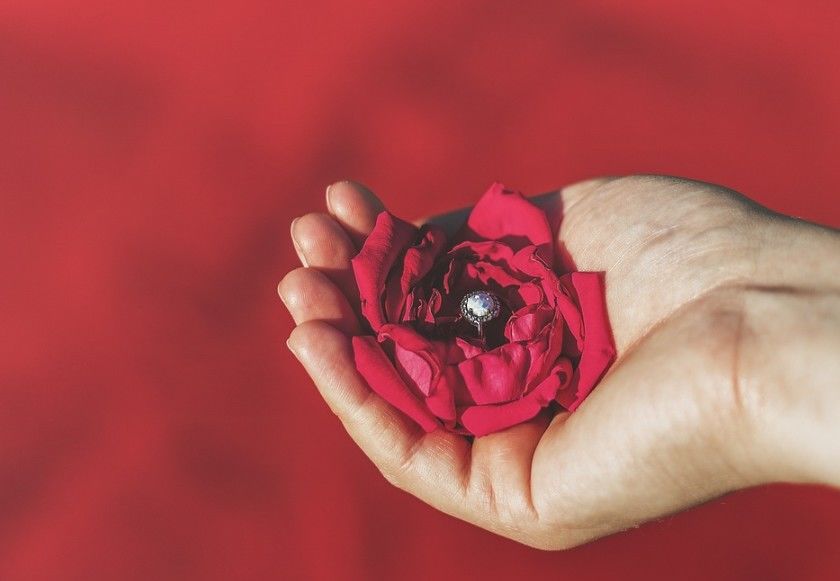Symbolizing unending love and purity, the diamond has been the standard for wedding rings for centuries. Uniquely fiery and brilliant, made out of one of the hardest substances known, diamonds can be cut into a multitude of shapes to display on a band of precious metal for your big day. You’ll want your engagement ring to represent the rarity and value of you and your fiancé’s love, so you’ll want to research all types of wedding ring styles and stones available on the market. Also be sure to check out Stones Diamond Rings Brisbane for great options.
Despite this centuries-old diamond standard, a diamond isn’t the only gemstone that can be spotlighted on your wedding band. Here are some other gemstone options that can make an unforgettable statement in your engagement and wedding photos.
Moissanite
Natural moissanite is exceedingly rare and is made largely of silicon carbide, brought to earth by meteorites. Most moissanite specimens for sale are synthetic and made to mimic a diamond in durability and clarity.
In some respects, moissanite is superior to a diamond, as this particular stone is doubly refractive while the diamond is only singly refractive. These refractive abilities make moissanite even more brilliant, so it can glitter in the sunlight and catch the attention of wandering eyes. Moissanite also has a higher luster than diamond and has a lighter feel both on your finger and your bank account. Not to mention, moissanite is nearly as hard as a diamond and resists the occasional scratch and even daily wear-and-tear.
Not all jewelers carry moissanite, so you may have to check with several jewelers to find a good selection. Look for a jeweler that specializes in wedding and engagement rings like Diamonds Forever San Diego, as wedding-focused shops like these tend to carry the best supply of diamond alternatives like moissanite.
Cubic zirconia
Cubic zirconia is also a synthetic gemstone that’s been made to mimic its expensive and widely-coveted diamond counterpart. It was discovered in 1937 but wasn’t grown in a lab until the 1970s. By adding yttrium oxide, the cubic form of zirconium oxide was stabilized.
The gemstone itself is made by fusing two compounds together at very high temperatures. Cubic zirconium (or CZ) has much of the fire and radiance of a diamond and is almost as hard. While its radiance mirrors a classic diamond, it’s a bit easier to chip and tends to be heavier than diamond. Most CZ that is handpicked for wedding rings is often white in color, as both zirconium oxide and yttrium oxide are white ores. However, CZ can be colored through additives to resemble customized diamonds in a wide range of colors.
Ruby
Ruby is made of corundum, which happens to be the third hardest substance after diamond, allowing the gemstone to resist blunt force, piercing scratches, etc.
As for color, rubies are always red. Any section of the corundum that is any other color than red is called a sapphire. Rubies range in color from pink to deep brownish-red, but the most prized color is pigeon’s blood, a deep red with no trace of blue or brown. The red pigment depends on the amount of chromium in the gem, which is, otherwise, colorless aluminum oxide.
When it comes to different options for cuts, rubies are more versatile than diamonds, as a ruby can be carved into a beautiful cabochon and even a cameo. There are even star rubies available on the market. These gems have needle-shaped inclusions of rutile that produce a gleaming, six-pointed star—which are among the most valuable rubies. A large star ruby can actually cost more than a flawless diamond of the same carat weight.
Sapphire
When most people think of a blue gem, they often imagine a sapphire. Despite common perceptions of sapphire as radiantly blue, a sapphire can be any color but red. The leuco sapphire, for example, is colorless and transparent, and there are sapphires that are almost black.
The most sought-after sapphire stone is a deep, velvety blue that is beautifully offset by a halo of smaller diamonds of a wedding ring. A great illustration of a sapphire wedding ring’s beauty is the well-revered and widely-known engagement ring of Princess Diana.
The color of a sapphire is influenced by its concentrations of iron or titanium. Both iron and titanium give the gem a glow, better known as its silk. While a sapphire gemstone can have a primary color, sapphires often change color in different lighting. For example, the alexandrite sapphire is blue in natural daylight but violet in artificial light.
Similarly to rubies, sapphires can be cut into cabochons and display a six-pointed star due to inclusions of rutile. A very valuable type of sapphire is the padparadscha sapphire which is known for its extremely rare pinkish-orange color.
Emerald
Emerald is a form of beryl and has been a prized gemstone since at least 3000 BC. Emerald was especially beloved by Cleopatra and was even dedicated to Venus, the goddess of love, by the ancient Romans. The most prized emeralds are transparent and deep, grassy green. Much like corundum, beryl is colorless when it’s pure. The green of the emerald is affected by its chromium or vanadium concentration. This presence of chromium distinguishes an emerald from plain old green beryl.
Emeralds are often flawed gems but are actually revered for their flaws, as they give the stone a mossy interior glow called a Jardin. Inclusions don’t detract from an emerald’s value unless they are so deep that they threaten the integrity of the stone. Because emeralds are much softer than diamonds or corundum, they are often step-cut to spare their corners. Because the step cut is tricky to accomplish, given the emerald’s flaws, large emeralds prepared this way are very expensive.
Conclusion
Don’t let tradition dictate your engagement ring of choice. Deviate from the norm and stand out in a crowd of soon-to-be-brides flaunting their run-of-the-mill diamond rings. Remember, one-in-a-million love deserves a one-in-a-million engagement ring.

